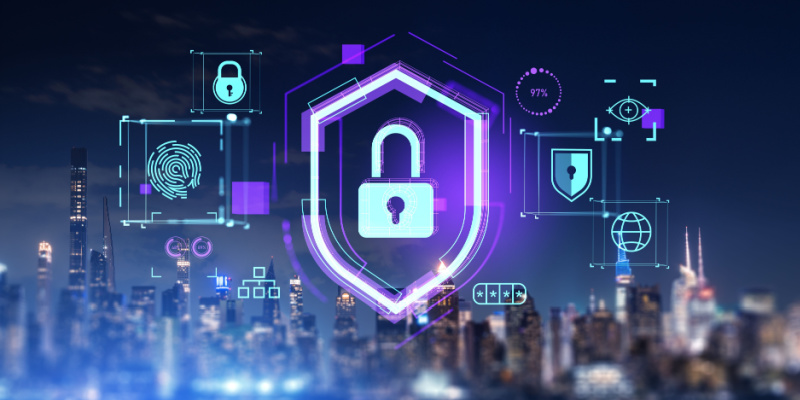Introduction
In today’s digital world, cybersecurity is more critical than ever. With technology advancing at a rapid pace, cyber threats are also evolving, becoming more sophisticated and harder to detect. As we step into 2024, organizations and individuals alike face a new wave of cybersecurity threats. In this article, we’ll discuss the top cybersecurity threats that everyone needs to be aware of in the coming year, covering the implications and necessary precautions to safeguard against them.
1. Artificial Intelligence (AI) and Machine Learning (ML) in Cyber Attacks
- Threat Overview: The use of AI and ML by cybercriminals to automate attacks and create sophisticated, evolving malware.
- Case Studies & Examples: Past examples of AI-driven attacks; projections for 2024.
- Mitigation Strategies: How organizations can use AI defensively; investments in AI-powered cybersecurity tools.
2. Ransomware Attacks Targeting Critical Infrastructure
- Threat Overview: Why critical sectors like healthcare, energy, and finance are prime targets.
- 2024 Predictions: Growing prevalence of ransomware and the high-profile, financially devastating cases expected.
- Mitigation and Resilience: Backup strategies, employee training, and response plans.
3. Cloud Security Vulnerabilities
- Threat Overview: The risks as more organizations transition to cloud infrastructure.
- Common Vulnerabilities: Misconfigured servers, insecure APIs, and poor identity management.
- Mitigation Strategies: Zero Trust architecture, regular security audits, and robust authentication protocols.
Read Full Article: AI’s Role in Fraud: The Need for Strong Identity Security
4. Deepfake Technology for Social Engineering
- Threat Overview: How deepfakes are being used for impersonation attacks in phishing, fraud, and business email compromises (BEC).
- Examples of Attacks: Real-world cases and the psychological impact on victims.
- Mitigation: Employee awareness training and technical solutions to verify identities.
5. Internet of Things (IoT) and Smart Device Vulnerabilities
- Threat Overview: How IoT device proliferation increases attack vectors for cybercriminals.
- 2024 Projections: Estimated number of IoT devices and associated risks.
- Mitigation: Network segmentation, device firmware updates, and monitoring for abnormal behaviors.
6. Zero-Day Exploits and Increased Exploitability
- Threat Overview: How zero-day vulnerabilities are becoming more common and easier to exploit.
- Famous Incidents: Recent zero-day vulnerabilities; potential impacts in 2024.
- Preventive Actions: Faster patching protocols, proactive threat hunting, and collaboration with cybersecurity vendors.
7. Phishing 2.0: Advanced Spear Phishing and Business Email Compromise (BEC)
- Threat Overview: How phishing has evolved with more targeted and personalized attacks.
- Impact on Organizations: The financial and reputational damage from BEC attacks.
- Mitigation: Multi-factor authentication (MFA), email verification tools, and continuous education.
8. Supply Chain Attacks
- Threat Overview: How attackers target third-party vendors to infiltrate larger organizations.
- Examples: Notable attacks like SolarWinds; why supply chain attacks are increasingly common.
- Risk Mitigation: Vendor vetting processes, third-party security assessments, and supply chain monitoring.
9. Quantum Computing Risks
- Threat Overview: The potential for quantum computing to break current encryption methods.
- 2024 Outlook: How close we are to “quantum supremacy” and the risks it poses.
- Mitigation: Quantum-safe encryption standards, NIST’s ongoing work, and preparing for the post-quantum era.
10. Cyber Warfare and Nation-State Attacks
- Threat Overview: How state-sponsored cyber-attacks have evolved in sophistication and frequency.
- Impacts on Society: The socio-political impacts of cyber warfare and its potential targets.
- Preventive Strategies: Collaboration between governments and private sectors; improving national cyber resilience.
Conclusion
In 2024, cybersecurity will be a battle of innovation and preparation. With these threats on the horizon, it is essential for both individuals and organizations to stay proactive and vigilant. Cybersecurity is no longer a field for IT departments alone but requires the involvement of every member of an organization and society. The future may hold unprecedented challenges, but with the right knowledge and strategies, these threats can be mitigated.
For regular updates on hacker and cyber security news follow our website.
